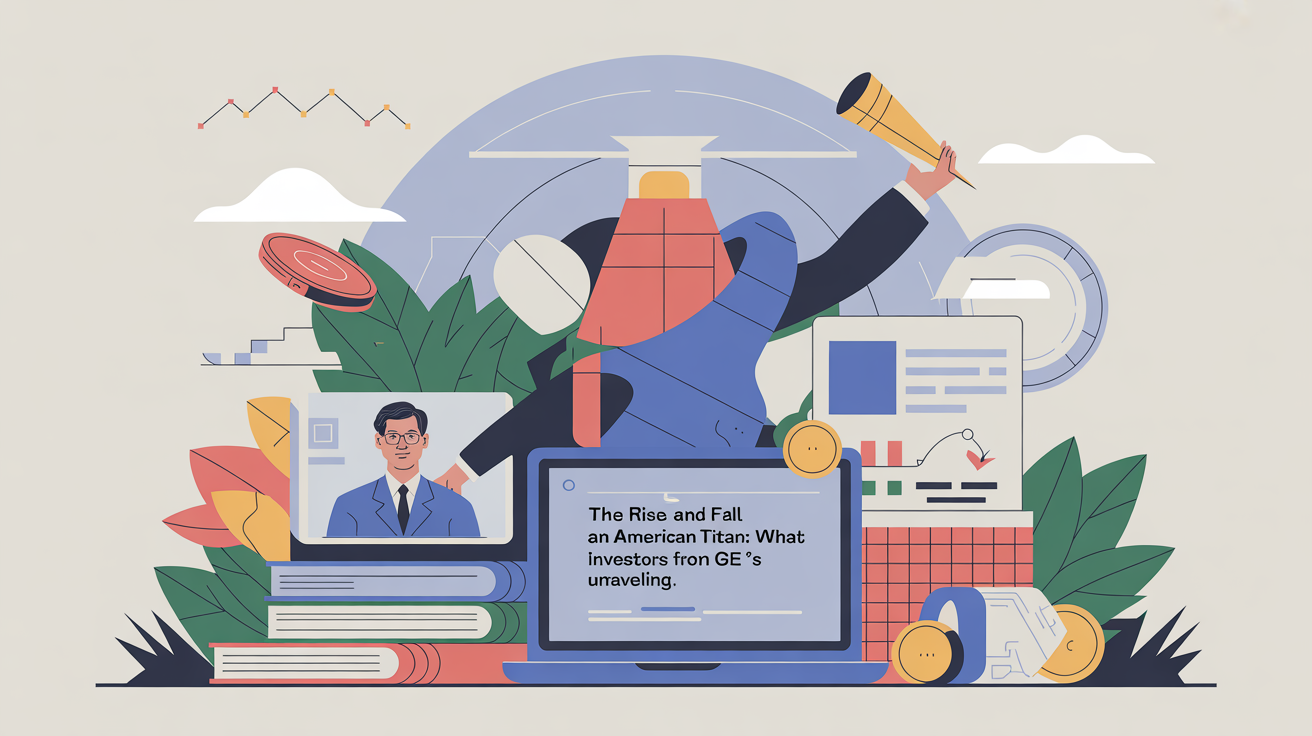The Unraveling of a Titan: How GE Fell From Grace—And What Investors Can Learn
Picture this: A company so dominant that its stock was considered a “must-own” for generations. A brand so woven into American life that its lightbulbs illuminated homes, its jet engines powered global travel, and its appliances defined modern kitchens. This was General Electric (GE) at its peak—a $600 billion behemoth crowned “America’s Most Admired Company” by Fortune for six straight years. Today? A cautionary tale. A 130-year-old icon reduced to a whisper of its former self, its stock price down 80% from its 2000 highs. For investors, GE’s collapse isn’t just history—it’s a masterclass in recognizing complacency, misaligned incentives, and the dangers of chasing growth at all costs. Let’s dissect how the unthinkable happened.
The Rise and Fall of an American Icon
Founded by Thomas Edison in 1892, GE became a symbol of American industrial might. By the 1980s, it dominated everything from turbines to NBC broadcasting. Under CEO Jack Welch (1981–2001), GE’s market cap soared from $14 billion to $600 billion. But beneath the glossy earnings reports, cracks were forming. Welch’s successor, Jeff Immelt, inherited a time bomb: a reliance on financial engineering, an unwieldy conglomerate structure, and a culture allergic to bad news. By 2018, GE was booted from the Dow Jones Industrial Average after 110 years—a gut punch to its legacy.
1. The Conglomerate Curse: When Diversification Becomes Distraction
GE’s “growth at any cost” strategy led to reckless diversification. At its peak, GE owned:
| 2000 (Peak) | 2020 (Post-Decline) |
|---|---|
| GE Capital (Financial Services) | GE Aviation (Aircraft Engines) |
| NBC Universal (Media) | GE Healthcare (Medical Devices) |
| Appliances (Refrigerators, Washers) | Renewable Energy (Wind Turbines) |
| Plastics Division | — |
This sprawl diluted focus. While competitors like Siemens specialized, GE’s leadership couldn’t effectively manage disparate industries. By 2008, GE Capital—a non-bank lender—accounted for 40% of profits (Federal Reserve data), leaving the company exposed during the financial crisis. Compare this to 3M, which maintained a tighter portfolio around materials science and thrived.
2. Financial Engineering: The House of Cards
GE’s earnings growth under Welch wasn’t just about innovation—it was fueled by accounting gimmicks. The company smoothed earnings by selling assets or adjusting reserves, creating an illusion of stability. For example, GE Capital used mark-to-market accounting to book future profits upfront, a tactic later criticized by the SEC. When the 2008 crisis hit, GE’s reliance on short-term borrowing collapsed: Its commercial paper market froze, requiring a $139 billion federal bailout (U.S. Treasury data).
| Period | GE Return | S&P 500 Return |
|---|---|---|
| 2000–2010 | -64% | -23% |
| 2010–2020 | -45% | 190% |
3. Cultural Rot: When Success Breeds Arrogance
GE’s leadership culture prioritized loyalty over accountability. Immelt’s team famously avoided delivering bad news, delaying critical decisions. The 2017 dividend cut—only the second since the Great Depression—caught investors off guard. Meanwhile, innovation stalled: GE’s R&D spending dropped from 6% of revenue in 2000 to 3% by 2015 (Harvard Business Review). Contrast this with Honeywell, which maintained R&D discipline and outperformed GE by 300% from 2002–2022.
Lessons for Investors: Spotting the Next GE
GE’s decline offers four warnings for investors:
- Beware of Earnings Miracles: Consistent quarterly growth amid economic turbulence often masks risk.
- Debt Kills Flexibility: GE’s $134 billion debt load in 2018 forced asset firesales.
- Culture Matters: Companies that punish dissent risk strategic blind spots.
- Simplify to Thrive: Successful firms like Apple focus on core strengths.
The Path Forward: Vigilance Over Nostalgia
GE’s story isn’t just about failure—it’s about adaptability. Since 2021, CEO Larry Culp has slashed debt by 70% and spun off healthcare and energy units. But for investors, the real takeaway is universal: No company is too big to fail. Study financials obsessively. Question diversification. Prioritize leaders who value transparency over theatrics. Because in the end, the market doesn’t care about your pedigree—only your performance.
Want to dive deeper? Explore our analysis of IBM’s turnaround or compare GE’s trajectory with other fallen giants like Sears. Knowledge isn’t just power—it’s profit.


Leave a Reply